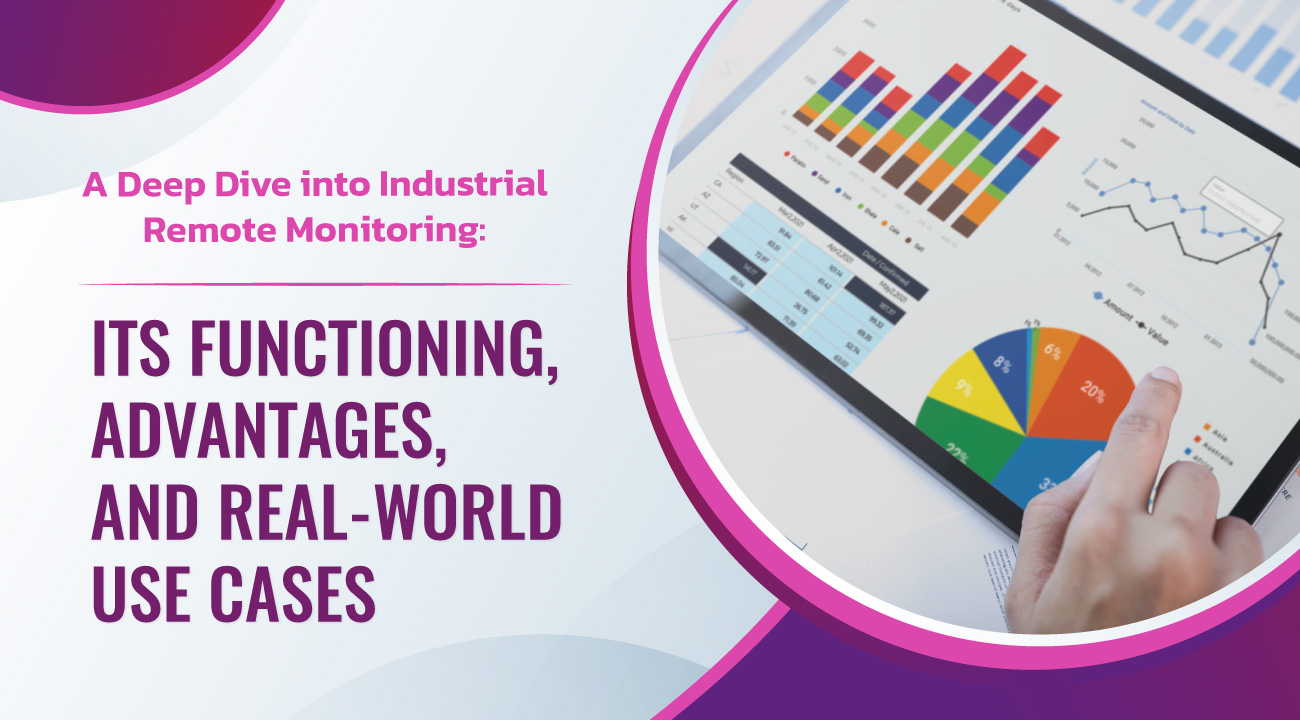
The Industrial Internet of Things (IIoT) is giving new significance to remote monitoring systems. This technology is revolutionizing the manufacturing sector by significantly enhancing productivity and efficiency.
In this blog, we will break down how IoT remote monitoring systems function, their unique advantages, and their broad applications in various areas. Stay with us as we explore how remote system monitoring is modifying the manufacturing landscape, setting the stage for improved operational effectiveness.
In order to comprehend the depth of an IoT remote monitoring system, it’s crucial to understand its core components. These are the building blocks that shape the system:
These elements, working collectively, shape a highly effective remote system monitoring structure. With this understanding of the key elements, the next section will elaborate on the seamless functioning of these components in an operational setting.
Moving ahead into the world of industrial remote monitoring, it’s pivotal to recognize the operations that power it. This section will explain the sequence of data collection, visualization, and alert generation in such systems.
The interplay between these stages forms the basis of an effective IoT remote monitoring system. Each step contributes to maintaining a smooth production flow and optimizing industrial processes.
Having walked through the operations of an IoT remote monitoring system, it’s evident that such technologies have a lot to offer. Just like offshore development services leverage remote capabilities to offer efficient services, industrial remote monitoring too offers significant advantages. But, what are the tangible benefits, and how does it translate to real-world applications? Let’s look at that as well.
With a solid understanding of the operational elements of industrial remote monitoring, we can now explore its manifold advantages.
Firstly, efficiency improvement stands out as a significant benefit. Through constant monitoring and data collection by the remote monitoring system, factory operations can be optimized, leading to better use of resources and enhanced productivity.
Secondly, these systems also help in error reduction. The constant inflow of data from the remote system monitoring enables the early identification and rectification of potential issues, preventing major system faults and downtimes. This proactiveness not only minimizes errors but also ensures that the production line remains uninterrupted.
Lastly, the role of these systems in cost savings cannot be overstated. By enabling predictive maintenance, avoiding unscheduled downtimes, and ensuring optimal resource utilization, industrial remote monitoring results in significant financial savings.
The real-world use cases of these benefits are seen clearly in various manufacturing and factory settings:

These examples illustrate how industrial remote monitoring is shaping the future of manufacturing, pushing the boundaries of efficiency and productivity.
In this blog, we have taken a detailed journey into the world of Industrial Remote Monitoring, showcasing its significance in manufacturing and factories. Despite potential challenges, the implementation of IoT-based Remote Industrial Monitoring provides immense benefits, reshaping the industry by promoting efficiency, reducing errors, and saving costs. We’ve touched upon real-world use cases, painting a vivid picture of how Samyak Infotech’s tailored services play an integral role in this transformative process.
Samyak Infotech, a top software development company, is at your service, offering end-to-end IoT solutions that can drive your digital transformation journey toward Industry 4.0. Experience lower operating costs, reduced downtime, reliable data flow, and preventive maintenance with our Remote Monitoring System. With our solution in place, you can collect and analyze data from your industrial plants, buildings, and machinery seamlessly. This way, you can take data-driven decisions, improve quality, and enhance processes efficiently.
To learn more about how Samyak Infotech can empower your operations, drop us an email at sales@samyak.com
Step into the future with us. Enhance your operational efficiency with our Remote Monitoring System. Don’t just adapt to the digital revolution – lead it.
©2025 Samyak Infotech Pvt Ltd. | All trademarks, images and logos are the property of their respective owners.